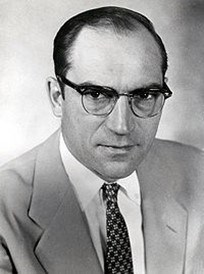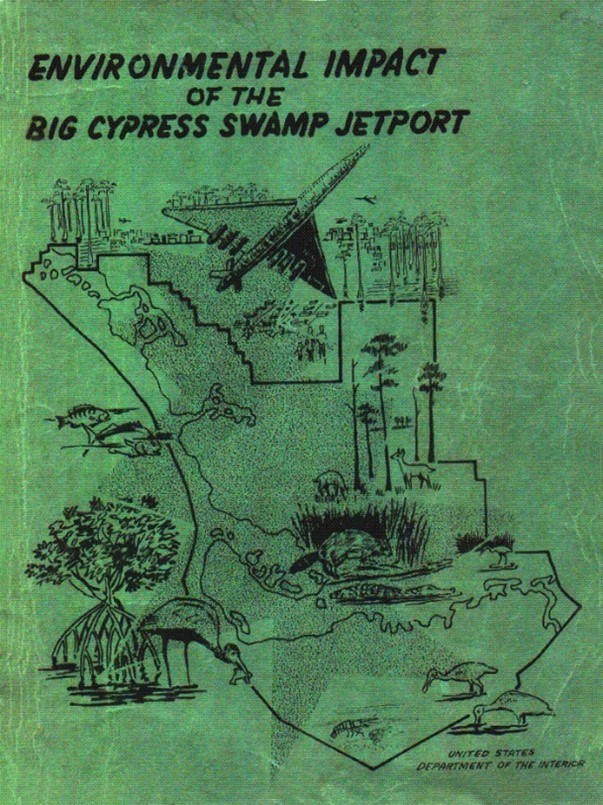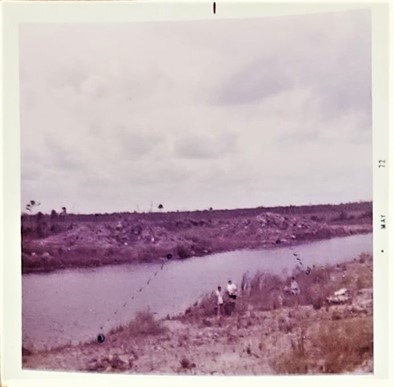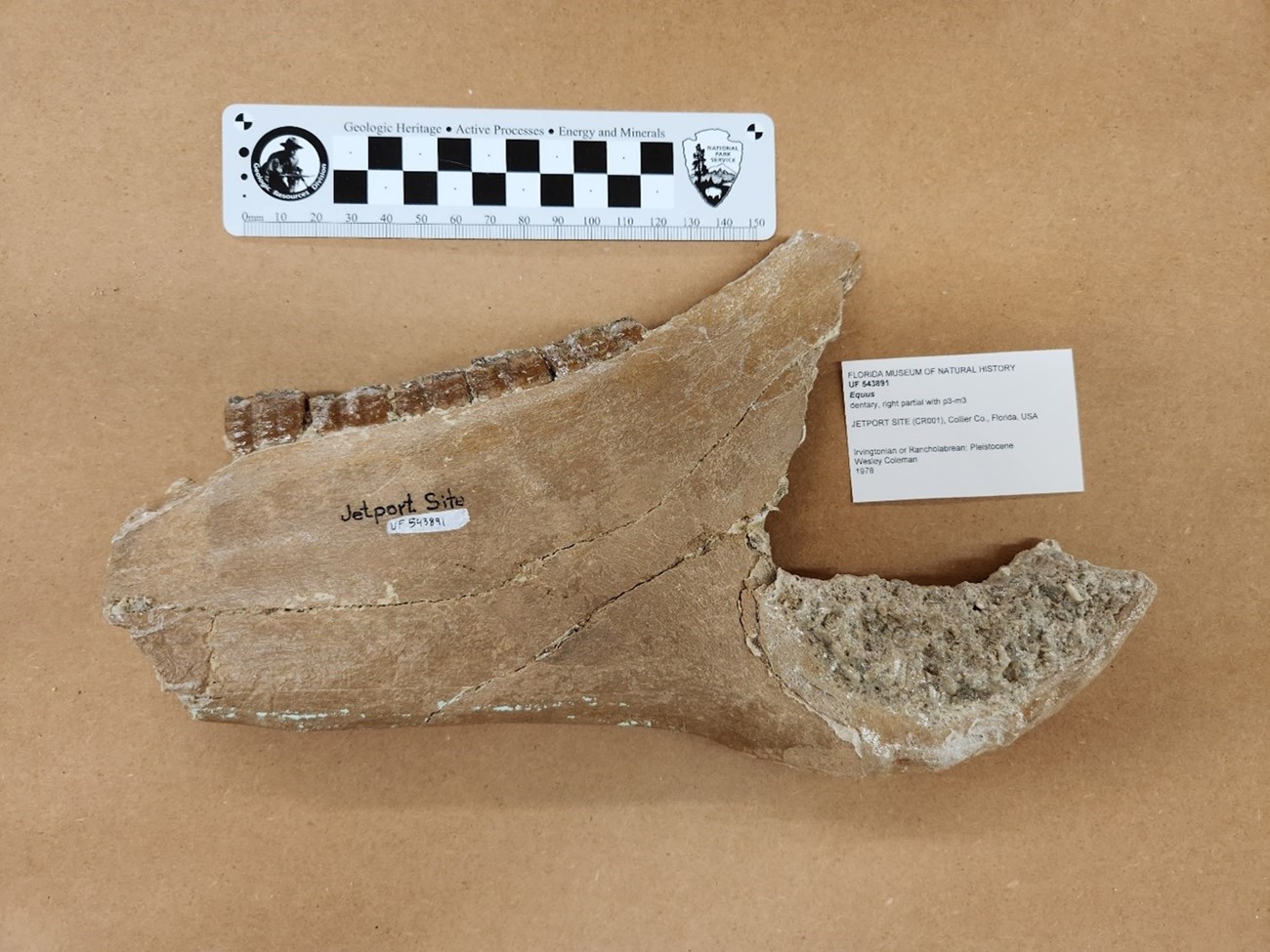Part of a series of articles titled Park Paleontology News - Vol. 15, No. 2, Fall 2023.
Article
A Glimpse into The Pleistocene Paleoecosystem of Big Cypress National Preserve

Vincent L. Santucci and Justin Tweet, paleontologists
NPS Geologic Resources Division
Introduction
In 2019, a small and nearly forgotten collection of Ice Age fossils, associated with a paleontological locality within the modern boundaries of Big Cypress National Preserve (BICY), was discovered within the collections of the Florida Museum of Natural History (FLMNH) in Gainesville, Florida. While undertaking research, paleontologist Justin Tweet came upon information regarding the discovery and collection of Pleistocene vertebrate fossils from a locality now within BICY. The fossils were collected during the late 1960s and early 1970s in conjunction with planning for the construction of a proposed large jetport in the Big Cypress Swamp just north of Everglades National Park. In February 2023, NPS Senior Paleontologist Vincent Santucci visited the FLMNH to inventory and photograph the BICY fossil collections and learn more about the history associated with these specimens.
History of the Big Cypress Fossil Discovery

NPS photo.
The discovery of Ice Age fossils from the Big Cypress Swamp in southwestern Florida is closely tied to the environmental movement of the 1970s and the establishment of the nation’s first national preserve. With the increasing population across Florida, along with the growing tourism in the state, plans were put forth during the 1960s to develop the world’s largest jetport north of Everglades National Park. The location was chosen in part to accommodate supersonic passenger jets, then believed to be the future of air transportation. Conservationists such as Marjory Stoneman Douglas and the U.S. Geological Survey senior hydrologist Dr. Luna B. Leopold (son of conservationist Aldo Leopold) (Figure 1) were courageous advocates for protection of the Everglades and Big Cypress Swamp ecosystems and helped to prevent the development of the jetport. Leopold coordinated the development of the Environmental Impact Report of the Big Cypress Swamp Jetport (Figure 2) published in 1969 which presented scientific perspectives in strong opposition to the jetport (Leopold and Marshall 1969).

NPS image.
In addition to blocking the construction of the jetport, the advocacy for protecting the Big Cypress swamp and watershed increased the public and political awareness regarding the importance of preserving these fragile ecosystems in southwestern Florida. Consequentially, on October 11, 1974, Big Cypress National Preserve was officially established as a unit of the National Park Service representing the first designated national preserve in U.S. history.
Geology of the BICY Fossil Locality

Florida Museum of Natural History photo.
The geology of the Big Cypress Jetport Fossil Locality consists of the underlying Tamiami Formation, a Late Miocene to Pliocene unit, which is a widespread bedrock unit in southwestern Florida. The Pleistocene vertebrate fossils from the jetport locality were discovered in a sedimentary sequence of reworked Tamiami Formation rocks, described as the Fort Thompson Formation (DuBar 1991). The fossils were collected from a fluvial channel sequence consisting of terrestrial sands, pebbles, and limestone. McKinney (1977) interpreted this channel deposit as representing an Ice Age stream valley.
Fossil bones were uncovered during the excavation of a borrow pit as a source of fill for an airport runway being constructed (Figure 3). According to McKinney (1977) the construction workers who were transporting sediments from the south side of the runway began to notice fossil bones and teeth in the sediments. The exposure of the sedimentary strata in the borrow pit showed a progressively graded sequence with rounded cobbles, oyster shells, and bones at the base of the sequence. The overlying sediments graded to a fine-grained limestone on the top of the section (Figure 4). McKinney interpreted the strata as a sequence developed during a rising water table. Since the locality is only a few feet above sea level, this section may have been associated with a transgression of the sea associated with a rising sea level.

Paleontology
Before Big Cypress National Preserve was formally established as a unit of the National Park Service, one of the six planned runways was completed. It was during this construction that fossil bones were discovered. Although the fossil specimens from the Big Cypress Jetport Fossil Locality are largely isolated and partially complete vertebrate bones and tortoise shell fragments, many of these fossils are identifiable to the genus level. According to McKinney (1977) most of the original fossils discovered at the locality were not salvaged and are considered to be lost. A small team from the Florida Museum of Natural History, including graduate student Curtis McKinney, conducted field work and collected fossils over several years during the early 1970s.
The Florida Museum of Natural History website reports that the museum maintains six specimens from the Big Cypress Jetport Fossil Locality. Little information was associated with these specimens, but the site was identified as Pleistocene based on the presence of Mammuthus. The other fauna are all typical of the Pleistocene including fossils of camels (Figure 5), horses (Figure 6 and 7), canids, and tortoises. A portion of the Big Cypress Jetport Fossil Locality collection was not cataloged at the time of this article.

NPS photo.

NPS photo.

NPS photo.
Conclusion
Further study and description of the fossil collection from the Big Cypress Jetport Fossil Locality is warranted. Ice Age vertebrate fossils are uncommon in the southern tip of Florida, south of Interstate 75. More specific taxonomic identification of the fossil vertebrates would help to better define the age of this fossil assemblage and may shed light on the Pleistocene paleoecosystem of the southwestern portion of the Florida peninsula.
Acknowledgements
We extend our thanks to the Florida Museum of Natural History staff, including curator of vertebrate paleontology Bruce MacFadden, vertebrate paleontology collections managers Rachel Narducci and Aaron Woodruff for providing access to the Big Cypress Jetport Fossil Locality collections.
References
- DuBar, J.R., 1991, Florida Peninsula, IN DuBar, J.R., and others, Quaternary geology of the Gulf of Mexico coastal plain, Chapter 19, OF Morrison, R.B., ed., Quaternary nonglacial geology; conterminous United States: Geological Society of America, The Geology of North America, The Decade of North American Geology (DNAG), v. K-2, p. 595-604.
- Leopold, L.B. and A.R. Marshall, 1969. Environmental Impact of the Big Cypress Swamp Jetport. United States Department of the Interior, 155 p.
- McKinney, C.R., 1977. An evaluation of Uranium Series Disequilibrium Dating of fossil teeth. Master of Science Thesis, University of Florida, 66 p.
Related Links
-
Big Cypress National Preserve (BICY), Florida—[BICY Geodiversity Atlas] [BICY Park Home] [BICY npshistory.com]
Last updated: March 22, 2024
